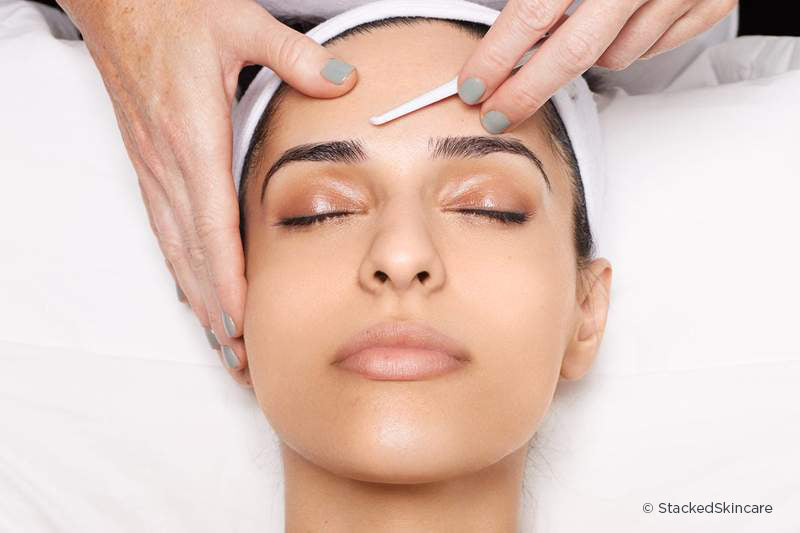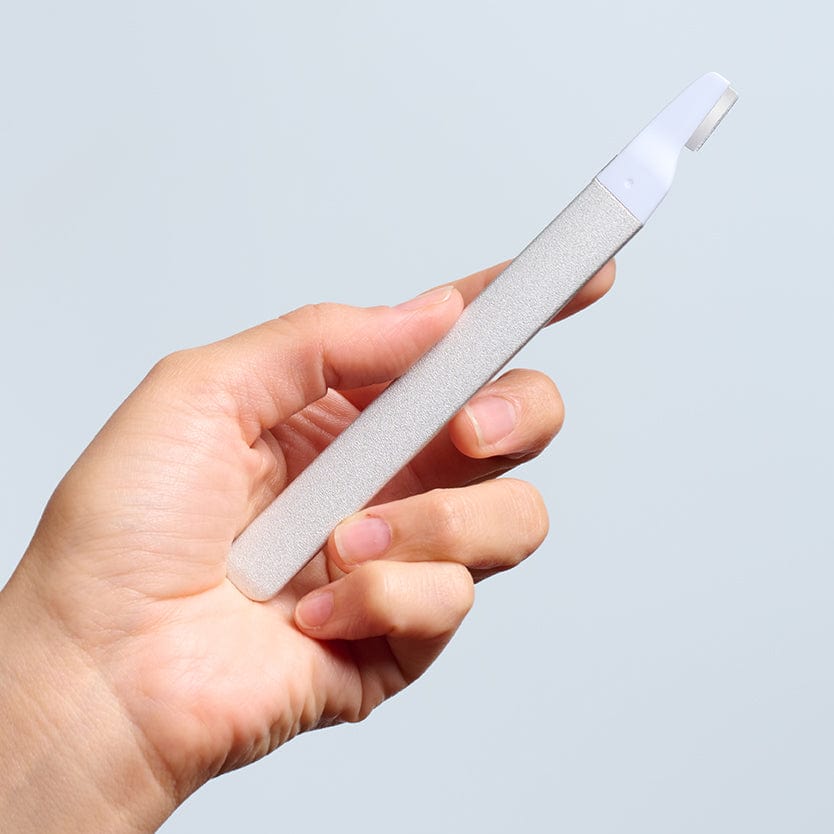5 Dermaplaning Myths You Shouldn’t Believe
Written by Kerry Benjamin

Of all our favorite skincare treatments, dermaplaning may be the most misunderstood. Once available only through in-office treatments, dermaplaning is a simple exfoliation technique that’s now easy to do yourself thanks to new user-friendly devices like our Dermaplaning Tool, Standard Dermaplaning Blades and Precision Dermaplaning Blades.
Dermaplaning removes dead skin and peach fuzz with a single-edge blade, instantly revealing smoother and softer skin. Performed regularly, dermaplaning helps diminish the appearance of dark spots and fine lines and enhances product penetration. Unfortunately, much misinformation is swirling around the internet about dermaplaning. To help you out, we’re myth-busting five of the most common misconceptions about this treatment.
MYTH #1
Your Peach Fuzz Will Grow Back Thicker & Darker
Let’s get this rumor done with once and for all: no matter where it grows on your body, shaving does not cause hair to grow back thicker or darker. Many people think that shaving your legs or underarms causes thicker hair growth. This is false. It’s biologically impossible for hair to grow back thicker because of shaving. Shaving simply creates a blunt tip on the hairs, which many interpret as greater thickness. When you dermaplane, you remove fine hair called vellus hair. This hair is so thin and soft that removing it with a dermaplaning tool will have little to no impact on its appearance when it grows back. After removing the dead skin and peach fuzz, your skin will instantly feel and look smoother and brighter.
MYTH #2
Dermaplaning Is Painful
Dermaplaning is a pain-free way to exfoliate the skin and remove facial hair, especially compared to other hair removal techniques like sugaring, threading, and waxing.
MYTH #3
Dermaplaning Will Cause Breakouts
Like most exfoliation techniques, dermaplaning prevents breakouts rather than causes them. While dermaplaning can’t be performed on skin with active pustular acne, it will prevent clogged pores and pimples from forming. By removing the top layer of dead skin cells, dermaplaning prevents debris from getting trapped inside your pores—less dead skin = fewer breakouts. By gently exfoliating the skin, dermaplaning also makes it easier for acne treatments and serums to penetrate the pores to prevent and treat breakouts.
MYTH #4
Dermaplaning Isn’t for Darker Skin
While some exfoliation methods aren’t recommended for darker skin, dermaplaning is 100% safe. It’s one of our favorite exfoliation methods for dark skin because it instantly removes the darker baby hair and instantly brightens the skin
MYTH #5
Dermaplaning Is Time-Consuming
While it may take you slightly longer during your first few uses as you get used to performing the treatment on yourself, dermaplaning shouldn’t take you longer than 3-5 minutes. You only need to dermaplane once a week to see noticeable results.
Real Women. Real Results.
Watch this and find out what four real women say about their experiences with dermaplaning at home for the first time.
About the Author

Kerry Benjamin, a licensed aesthetician, has over 12 years of experience. Kerry is the driving force behind StackedSkincare. As the company's CEO, Kerry has dedicated her career to revolutionizing skincare. Her innovative approach combines peels, serums, and specialized tools toeffectively address a wide range of skin concerns. CA LE license number Z98459.

